


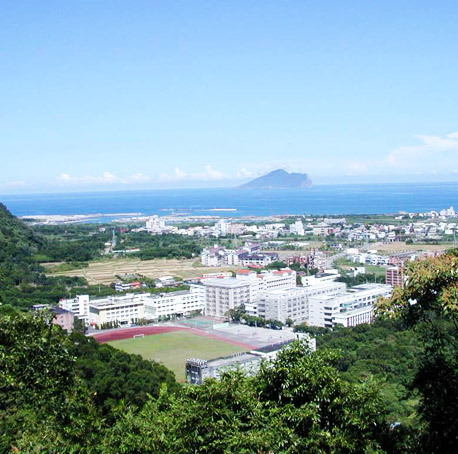
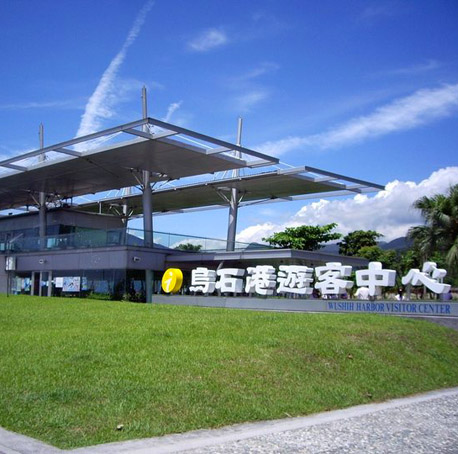

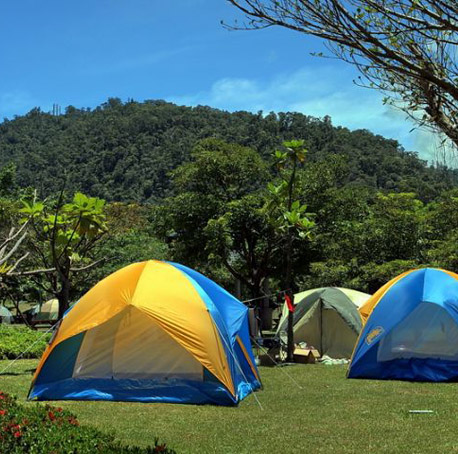
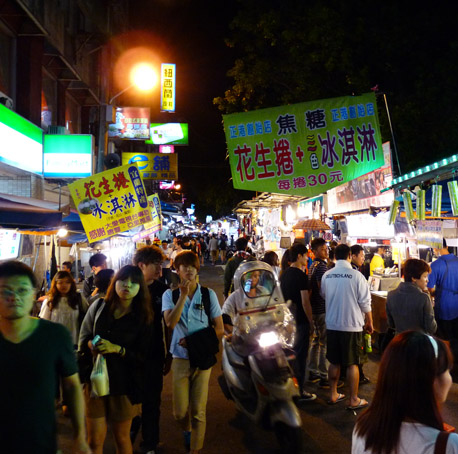
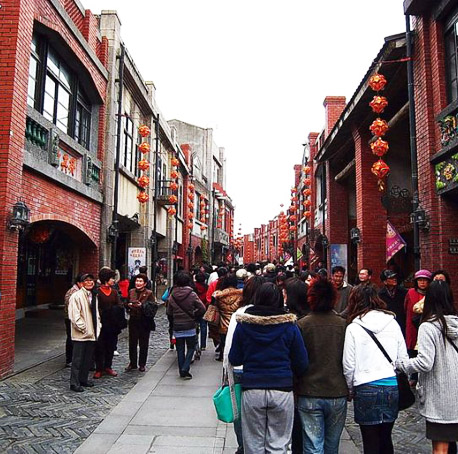
Other recommendations
Linmei Eco-Village
Located at Jiaosi Township of Yilan County, Linmei Village is regarded as a real life Utopia after years of community development. Although it is not included in the project of Promotion Team. The construction of its Shipan Trail has successfully connects the villagers, ecosystem and the industry, and helped it earn the fame as “Linmei Eco-Village.”
With both geography and natural ecology being taken care of, Linmei Village becomes a model “town village”
Fo-guan university
This Department of Foreign Languages & Cultures of ours is the only department in Taiwan which integrates contemporary cultural studies into English teaching.
Dan-jian university
This Department is located at the mountain,it can view over guishan mountain.
Lanyang tech university
This Department is located at the plain site,it's a very beautiful campus.
Wushih Harbor Site
Wushih (Black Rock) Harbor comes from the 3 large, black, coral rocks within the harbor. In 1826, the Cing Court designated it as an official harbor under the administration of the Touwei County Administrative Office. In 1878, the river way was silted up with sand and stones flushed down from the mountains from serious flooding. In 1883, an American ship got snagged on the coral reef, sinking and subsequently blocking the harbor entrance. During Japanese rule, the Japanese government replaced river transportation with land transportation, further eroding Wushih Harbor's usefulness. In 2003, the "Wushih Harbor Deep Sea Fishing Harbor" project was completed and the Lanyang Museum construction project was subsequently launched.
Chatracterestic:During the Cing Dynasty, Wushih Harbor was the largest Harbor in Yilan. The Cing Court set up a customs house and protective cannon units here. Connecting waterways went straight to Cingyuan Temple and the 13 commercial shops in front of the Lu Family's mansion. All kinds of daily supplies were shipped in and out of this area. With commercial ships gathering at the harbor, the "Spring Sailing Boats at Stone Harbor" was named as one of the "8 most scenic spots in Yilan".
Luodong Forestry Culture Garden
Once a place where trees felled deep in the mountains were stored and cut up, Luodong Forestry Culture Garden (羅東林業文化園區) is now a nature preserve as well as a place where visitors can learn about the history of logging in Taiwan and the lives of those who worked in the industry.
Filled with attractive Japanese-style buildings constructed between the 1920s and the early 1960s, the 16-hectare garden was opened to the public in 2011. The most memorable sight is the 5.6-hectare log pond, where Formosan Red False Cypresses and certain other types of timber were stored. The water prevented the wood from cracking or warping during the summer, and also drew resins out from the wood, thereby lengthening its lifespan. Even now, massive semi-submerged tree trunks dot the pond.
A narrow-gauge branch line from what's now Taipingshan National Forest Recreation Area (太平山國家森林遊樂區) terminated here, and six old locomotives have been preserved.
Of the four small exhibitions in the garden, the most interesting by far is the Forest Life Exhibition. Black-and-white photos and heirlooms such as stoves and tools depict the tough lives led by forestry workers. Because they were far from the rice-growing lowlands lowlands, their main source of carbohydrates was mountain yam. Black-and-white photos show workers and their families using cable cars to get between the plains and high-altitude logging camps.
Bilingual information is provided throughout the garden.
Ulaokeng Scenic Area
Wulaokeng belongs to the field of Sincheng River. The river course enters the plain here and forms a special beautiful landscape composed of mountain and river. It was called “Wulao Mountain Stream” in the past, one of the “new eight Lanyang scenery spots.” The slopes on both sides of the river are warm and suitable for growing tea trees. The flavor of the tea tastes fragrant and sweet and makes Wulao tea well-known. In this area, the forests are verdant, the grass slope is green, and the river is flowing and cool. There are varicorhinus barbatulus, freshwater minnow, grouper, paradise goby, mitten crab, and eels swimming in the river. The county hall makes efforts to realize ecological restoration projects and they really work. The river is worth the reputation of “the top mountain stream in Lanyang area,” and a scenery spot among “one hundred scenery spots in Lanyang area.” There is a proverb well-known by local residents near Wulaokeng, “Wulaokeng has a large stone drum and A Jian Cheng has beautiful girls.” In the past, the riverbed of Wulaokeng River is crowded with big and small pebbles. The present riverbed is taller because of the deposition. Half of the large stone drum was in the water before but the sound of the stone drum has been gone now. A Jian Cheng at the downstream of Wulaokeng has outstanding geographical environment, fresh air, and clean water. It bears lots of beautiful girls. Therefore, the reputation “Wulaokeng has a large stone drum and A Jian Cheng has beautiful girls” is spread and passed down. The scope of the scenic area reaches 400 hectares. The planned camping area is 70 hectares. The initially built area is 19 hectares, divided into two camping areas which are broad enough for 1000 people camping here. The camping facilities are complete such as cooking pavilions, camping square, rain shelter, bathing and toilet facilities. With the unique natural landscapes, the area becomes an outstanding multi-functional recreation area for camping, wild cooking, playing water, river tracing, mountain climbing, landscape appreciation, outdoor education, and tea tasting.
Luodong Night Market
Luodong Night Market is one of the must-visit places when touring to Yilan. Located near Luodong Chungshan Park, Luodong Night Market offers various mouth-watering local snacks and fashionable shops. Since it is at the center of Luodong, Luodong Night Market is a famous tourism stop for all visitors. Every evening, nearby shops, snack vendors, and stores open to welcome large populations of visitors and tourists. Various tasty snacks allure both local residents and foreign visitors. The popular signature snacks of Yilan Luodong Night Market include mutton herbal soup, iced tapiocas with red beans stuffed, rice noodle thick soup and many others. In front of mutton herbal soup, you will always see people wait in a long line for the delicacy. Moreover, the original shop that came up with iced tapiocas stuffed by red beans is here in Luodong; do not miss to try the specialty in the most original taste. Other than delicious Yilan snacks, visitors may also find Yilan specialties at Luodong Night Market shops. Ox-tongue-shaped Pasty (also known as Yilan Pastry) ;a flour made cake with either sugar, honey, or other flavors with its shape like an ox-tongue. As well as Smoked Duckling (Ya Shang), duck meat smoked by sugarcanes. In conclusion, Luodong Night Market is an interesting place to visit during your travel in Taiwan. Direction By Bus: 1. Take Gouguang Bus to Luodong 2. Take Capital Bus to Luodong 3. Take Kamalan Bus from Taipei or Banqiao Railway Station to Luodong By Train: Take train to Luodong Station, walk along Chongchen Road and turn right when seeing Xindong Road.
National center for traditional arts
The National Center for Traditional Arts (the NCFTA) was established in January 2002 and is one of the agencies overseen by the Council for Cultural Affairs, the Executive Yuan (Council for Cultural Affairs). It protects, surveys, researches, conserves, promotes and develops the traditional arts at a national level. In order to increase its efficiency, involve more talents and obtain more resources, public welfare facilities that do not require the authorities are privatized. It is hoped that by privatizing certain welfare provisions, the traditional arts would be more influential to the public. As a result, although the NCFTA is overseen by the central government, some of its facilities and its outreach division are privatized.
On 5 February 2005, the Cultural Heritage Conservation Law was modified and announced. By law, the NCFTA officially deals with the traditional arts, folklore and anything relevant to folklore in the country. The NCFTA and the former National Center for Research and Preservation of Cultural Properties oversaw recognized heritage conservators and were responsible for the protection, management, safeguard and promotion of the intangible cultural properties. In order to simplify the governmental structure, the Council for Cultural Affairs established the Headquarters Administration of Cultural Heritage in 2007 and transferred some duties and staff from the NCFTA to the Headquarters Administration of Cultural Heritage. Since then, the main duties of the NCFTA include the collection, protection, display, education and promotion of the traditional arts. It is also an exhibition venue for intangible cultural properties.